 Your new post is loading...
 Your new post is loading...
Ask any lifestyle magazine publisher how they’re making up for declining print revenue, and chances are they’ll mention e-commerce. But while countless publishers are struggling to drive dollars via online shopping, there’s a growing number of e-commerce companies moving in the opposite direction.
In recent months, customers of online-only retailers like Rent the Runway, JackThreads and Birchbox have received catalogs—yes, those old-school, printed booklets—in their mailboxes, while flash sale site One Kings Lane has been sending out “magalogs” combining decorating tips with photographs of rooms populated by the site’s ever-changing inventory....
It’s the latest craze, the emerging brand sponsored content site where companies pump out content off of their corporate website with the hopes of connecting to their target consumer in a way that doesn’t feel “Salesy.”
Visit sites like Forbes or Inc. and find brand sponsored content from global companies like SAP, Disney and EMC where the line between the pieces being native and advertisements is so thin that it could slide under a closed door.
This trend doesn’t root in hunches or guesses, it roots in truth; people trust content when it informs and educates and that is what these brands are doing, only they are doing it so intelligently that they have created the newest form of media company…
For as long as there’s been media, there has been a revolving door between newspapers, magazines and PR firms,” said Evan Hansen, senior editor at Medium. “As far as that goes, nothing is new.”
Hansen should know. He recently walked through that door himself, departing as Wired.com’s editor in chief to put down stakes in the land of content. While the path he took has been traveled by journalists before him, it’s undeniable that something has changed. Brands are luring away big names in journalism — Newsweek’s Dan Lyons and Melissa Lafsky Wall, PandoDaily’s Hamish McKenzie, Wired’s Michael Copeland, USA Today’s Michelle Kessler – and these writers aren’t churning out press releases; they’re still telling stories....
Marketers and publishers will keep a close eye on the Times' foray into the native-ad space, where the Times' entrance serves as a tacit endorsement of the emerging and controversial practice. Times CEO Mark Thompson has also said native advertising will be a salvo in the company's fight to restore growth to its limping digital ad revenue.
As the program takes flight and the Times works out the bugs in its redesign, here are five details you may not know about the latest entrant in the native-ad space.
Times staff pitched story ideas to Dell. One of Dell's first paid posts delves into the topic of millennials in the workplace. The author is a freelancer that the Times contracted, according to Ms. Losee. The millennial generation is among four topics Dell customers are interested in learning more about, she said. A Times editor -- not from its newsroom, but instead part of an internal "content studio" -- pitched ideas to Dell around these topics that weren't related to Dell products. Dell approved the story ideas, which the Times farmed out to freelancers....
...I should end the year on an upbeat note, shouldn’t I? But Time Inc. ruined it. The surrender of journalism to advertizing and public relations – not alliance with, but surrender to – was the biggest media story of 2013 that the media almost didn’t cover at all. But it’s right there in black and white, if buried on the slowest news day of the year:
Time Inc. will abandon the traditional separation between its newsroom and business sides, a move that has caused angst among its journalists. Now, the newsroom staffs at Time Inc.’s magazines will report to the business executives. Such a structure, once verboten at journalistic institutions, is seen as necessary to create revenue opportunities and stem the tide of declining subscription and advertising sales...
Alan Berkson has a unique place in the world of thought leadership. He is the guy who has the science of the corporate narrative nailed. Just plain pinned...
Let's welcome Alan Berkson, from Freshdesk, who is not only a thought leader but someone who has carved a special place in the pantheon. Alan is an expert at defining a corporate narrative - an area of paramount importance in a business world defined by digital transformation. A corporate narrative? Are you surprised? The 21st century demands that companies present themselves in new ways. For example, old school product marketing, based on the exhibition of features and functions, no longer works or is even likeable in any way. It now demands something akin to "a day in the life." How are the products going to affect the outcomes I'm looking for as my day proceeds? In other words a narrative, a story.
But Alan is speaking on a bigger stage than just product marketing. He's looking at the strategic requirement that the companies who are trying to engage with customers have a the same time the customers have the opportunity to express themselves with strong collective power....
Earlier this week, Coca-Cola declared the corporate website dead.
Take one quick look at their new corporate website and I think you will see an example of the future of quality content marketing. They are clearly displaying how the art of storytelling not only can influence our preference for a brand or product, but surely their intent is to also reach a search engine position of respect and power....
What is the 'best' consumer brand of 2013? Depends how you measure it....
The research reports that being perceived as a simpler brand results in higher customer retention and recommendation rates. 75% of people said when they perceived a brand to be simple, they would recommend that brand to family and friends.
The report also argues that customers are willing to pay a premium for simpler experiences with companies.
Providing simple, clear messages brands also create a better workplace for employees, encouraging innovation and creativity. Results showed 51.2% of respondents employed by ‘simple’ companies believe they are rewarded for being innovative, compared to just 6% at complex companies...
Facebook, Twitter, Pinterest are all moving to native ads. The native-social rush is on.
BIA/Kelsey estimates that social ad spend will reach over $10 billion by 2017 and that up to 40% or more of those outlays will go to native ads. In the social context, we define native ads as ads that are seamlessly integrated into a user's feed and are nearly indistinguishable from organic content.
...On Facebook, native ads in the News Feed generate 49-times higher click-through rates and a 54% lower cost-per-click than traditional placements in the right-rail sidebar. LinkedIn is making major investments in its native strategy and Pinterest is piloting native ads on its platform.
According to Jan Rezab, CEO of Socialbakers, a social media analytics company that works with Fortune 100 brands, "In the future, all advertising on social media will be native in-stream ads. The right rail and banners will disappear altogether."...
Real-time social media are transforming marketing and public relations. I recently visited two firms in Chicago that are responding to the need for speed within the flow of online conversationconversation.
...Content and storytelling are at the heart of how we help our clients build meaningful relationships with their audiences," said Mark Hass, president and CEO, Edelman U.S. Edelman's plan focuses on client partnerships with five U.S. newsrooms and one in the U.K.Edelman newsroom "trend spotters" identify trends and events, collaborate with account leaders and design creative concepts. Ideas are shared with clients, and then decisions are made about posting or not.Real-time PR and marketing content frequently is covered by traditional media -- television, radio, newspapers and magazines.
News organizations, too, are now in the business of conversation monitoring and engaging. In this sense, the news model shares with PR the goal of creating viral videos, flashy graphics, photographs, memes and other popular social media content. Everyone is competing for measurable engagement that may translate into new revenue....
... One particularly large group of contributors to the mass of content uploaded to Facebook every day are brands looking to gain new customers and make a few sales. Unfortunately, it’s this group of contributors who are arguably contributing most to Facebook fatigue. Brands are all over Facebook, even if you don’t actually like any brand pages. Advertising and suggested posts mean that you’re bound to come across a brand post at some point, while ‘like and share’ competitions mean that you’re even more likely to have your news feed polluted by branded content.
That’s not necessarily a bad thing; a lot of brands do have genuinely interesting things to say and provide some entertaining stuff that deserves to be shared. However, a lot of brands have fallen into Facebook auto-pilot, relying on a banal template of posts and images formulated by set ideas of what a brand should ‘do’ on Facebook and a desperation not to offend.
You’ve undoubtedly seen the type of content I’m talking about; ‘LIKE this post if you like dogs, SHARE it if you love dogs’ from a company selling washing machines; ‘It’s Monday, tell us who you’re favourite member of ABBA is’ from a gambling company. Its content designed to get likes and shares, regardless of relevancy to the brand posting it...
Here's why native advertising is the opposite of porn.It's a do-over from the past 20 years of online advertising. It's a bold new path for brands and publishers. It's the hoary advertorial dressed up in 21st-century clothes.
Native advertising is at least some of these things. Top publishers and brands met in Washington, D.C., on Wednesday for an American Press Institute summit to determine whether it is also the industry's salvation.
Fittingly enough, the host of the event was Atlantic Media, whose flagship publication, The Atlantic, introduced the native-advertising industry's first scandal when it ran an article entitled “David Miscavige Leads Scientology to Milestone Year" on its site in January. Commissioned by the Church of Scientology, the article was labeled as advertising, but raised hackles among fans and critics. A day later, Atlantic Media issued a three-word apology: "We screwed up."...
The five W’s of journalism remain a cornerstone of newsgathering today, but I have been increasingly thinking about five C’s as well: Context, Conversation, Curation, Community and Collaboration.
Below I try to define each, with particular attention to how they intersect, and I link to one good piece of writing on the topic. Nothing about this is supposed to be comprehensive, nor is it particularly original, it’s just a list of the things I’m thinking about right now and an invitation for you to add your thoughts...
|
...Although companies understand the part about becoming a media company they missed something very important: media companies don’t create media about themselves. This is why companies have problems with the content they produce, people are immediately skeptical about any media that is about the company that produces it — no matter how high the quality.
Take a look at the Nielsen study released this week, commissioned by InPowered. It found that branded content ranked extremely low among consumers but content written by journalists — independent of any brand — ranked very highly....
Companies everywhere are building corporate news operations. We talked to some of the best to find out how they did it.
... If you’re the CEO or CMO of a mid-sized or large brand, you may have started thinking about building an in-house news operation of your own. To help you get there, we’ve created an ebook, The CMO’s Guide to Brand Journalism.
The book will help you structure a team and figure out what obstacles you should expect to encounter and how to get over them. We also explain the structure of a newsroom, and how to map that structure to a corporate environment.
Also provided is an explanation of four business models adopted by various companies. The four models are explained via case studies developed by interviewing journalists and executives at Microsoft, IBM, GE, Intel, Adobe, and other companies....
The New York Times has sold its soul for a handful of beans...and there's no magical beanstalk to save it from a very bad decision.
Native advertising is the world’s worst idea and I can’t believe the New York Times management is so gullible and clueless in agreeing to its publication. Gullible — because they were talked into giving away their hard won position as the nation’s top newspaper by marketing people looking for short-term gains.
Clueless — because they can’t see the stupidity of their actions and how they’ve shot themselves in the foot, groin, and brains.The brands and marketing agencies are clueless, too. The practice is exceptionally harmful because it makes it seem as if all content is corrupt...
...No matter how great the content is, it needs a meaningful distribution strategy behind it to convert into something truly valuable (more on that here: The Failing State Of Content Marketing). So many brands actually have great content, but have a sub-par content distribution strategy where the vast majority of the work resides behind their own walled garden.
Now, even if you have a great story to tell, it could be that no one even knows that you exist....
Last year, Coca-Cola launched the Journey website as its own media outlet, using an editorial, image-heavy format.
Fuelled by the brand's Content 2020 plan, the redesign was described as 'the most ambitious rethink of Coca-Cola’s web properties' since it launched the first website in 1995.
The company has gone from being declared 'creatively bankrupt' by a chief exec in 2004 to being named Creative Marketer of the Year at Cannes in 2013.
But the brand hasn't stopped there. One of its goals is to 'kill the press release', reducing the number of press releases by half by the end of this year and wanting them gone entirely by 2015....
Sharing quality content with their audience, engaging with readers below the line and building their brand, these are just some of the tips for new journalists shared at a journalism event today.
Speaking at the NCTJ's Journalism Skills Conference at Bournemouth University, a panel were asked to give advice to journalists, particularly those entering the field.
The panel featured Peter Bale, vice president and general manager of CNN International Digital; Pete Clifton, executive producer for MSN UK; and Liisa Rohumaa, a journalism lecturer at Bournemouth University...
How news organisations are building commercial teams of former journalists who create paid-for content on behalf of brands...
The Huffington Post, in conjunction with parent company AOL, last month published a report which proposed that native advertising is "sponsored content, which is relevant to the consumer experience, which is not interruptive, and which looks and feels similar to its editorial environment".
Perhaps the easiest way to understand it is by looking at a couple of examples, such as the Guardian's 'what to wear on a date' video, sponsored by John Lewis, with clothes featured in the video from the department store, and BuzzFeed's '20 coolest hybrid animals', created for hybrid car Toyota Prius....
While most of the impact of technology on marketing has been tactical so far, over the next decade or so there will be a major strategic transformation.
Today, however, digital technology has enabled us to retarget consumers when they respond to a message and that has changed marketing forever. In effect, we must make the shift from grabbing attention to holding attention.
That means that brands will have to learn to be more like publishers and develop content skills. It also means that marketers will have to create a genuine value exchange rather than just coming up with catchy ad slogans and price promotions. Like it or not, we’ve entered a post-promotional paradigm....
NewsCred has launched a newsroom for brands seeking content marketing.
Who says no one's investing in journalism anymore?
NewsCred, a six-year-old New York-based content marketing company known for licensing articles from The Economist and the New York Times to brands, is creating its own newsroom with 500 journalists.
The writers, photographers, videographers and digital artists on contract with NewsCred will be at the disposal of brands seeking original content. The company is being selective about whom it hires. The pay is also decent: a minimum of $500 per blog post and $1,000 per article. The journalists get 100% of the fees for such articles. A NewsCred rep says the content is a value-add; the company's real business is in licensing its software platform, which a brand can use to upgrade their marketing outreach....
David Ogilvy is one of the biggest names in advertising, and since advertising is all about “big names”, that’s saying a lot. He created some of the most iconic advertising slogans and imagery in the world, and in 1962, Time magazine called him “the most sought-after wizard in today’s advertising industry.”
Even though Ogilvy created ads at another time, for another audience, his messages have endured for many decades. And the lessons learned from a lifetime in advertising agencies are still applicable today. Bloggers can learn a lot from the world of advertising agencies – about how to target an audience, to think creatively about content, and to manage your time and projects effectively...
Journalists pay heed – your next career could be as managing editor of a brand’s community.
That’s right. Brands, which inspire everything from love to hate, inspire consumers to talk to them through the web’s multi-dimensional system, making the conversation – and not the advertising – the most important thing a brand must negotiate and nurture. Brands gather communities around them. And where there are communities, there is a need for truth. And truth makes the best stories.
The true storytellers need to live in brands, and they must practice the trade made special by journalism – telling the truth of your community, and helping them tell stories. And the people who perform that task best are truth seekers like journalists. Not message flackers.
Real journalism – not the tawdry Fox News type or the panic of a breaking news story involving a shooter, when CNN and its ilk, in a rush to be first, get more facts wrong than right – doesn’t shock or manipulate. Real journalism, as it has been practiced by some of the world’s best writers for centuries,...
David Carr’s weekly column for The New York Times carries an intriguing title: “The Media Equation.” With 430,000 Twitter followers, he’s a unique journalist exploring the world of media for the larger Times brand, with its 9.5 million followers. It’s similar to the 1,200 individually branded FORBES contributors — and staff reporters, too — who now write about specific business topics under our 96-year-old umbrella brand.
I love the rubric attached to David’s newspaper work. FORBES itself is trying to figure out the media equation in an era when anyone can publish anytime — no trucks, planes or satellites required. Our still-evolving solution disrupts century-old newsroom thinking and processes. It also breaks with tradition in how certain marketing messages are sold and integrated on our growing news platform....
|



 Your new post is loading...
Your new post is loading...










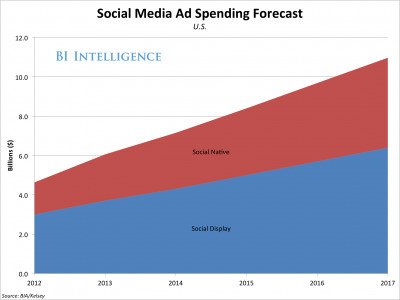




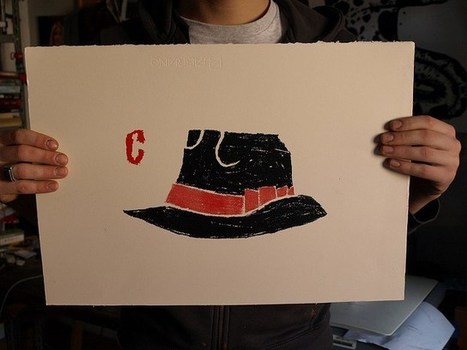
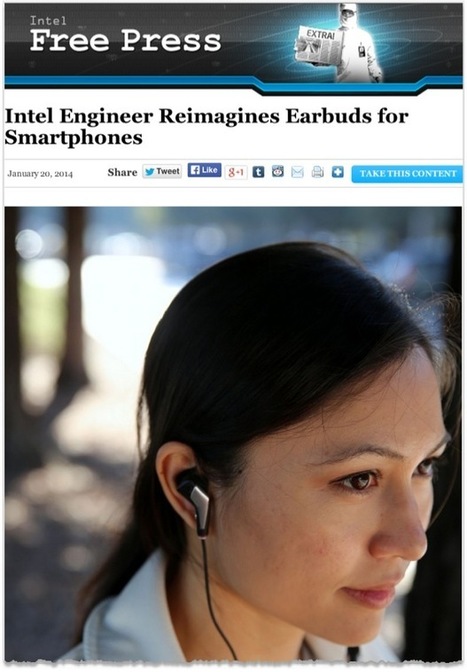
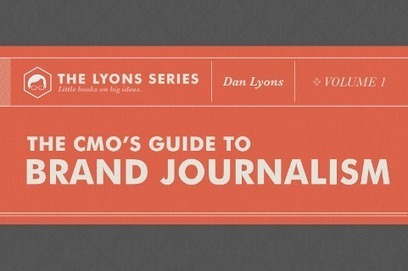

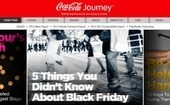














How to explain this counterintuitive native advertising trend?